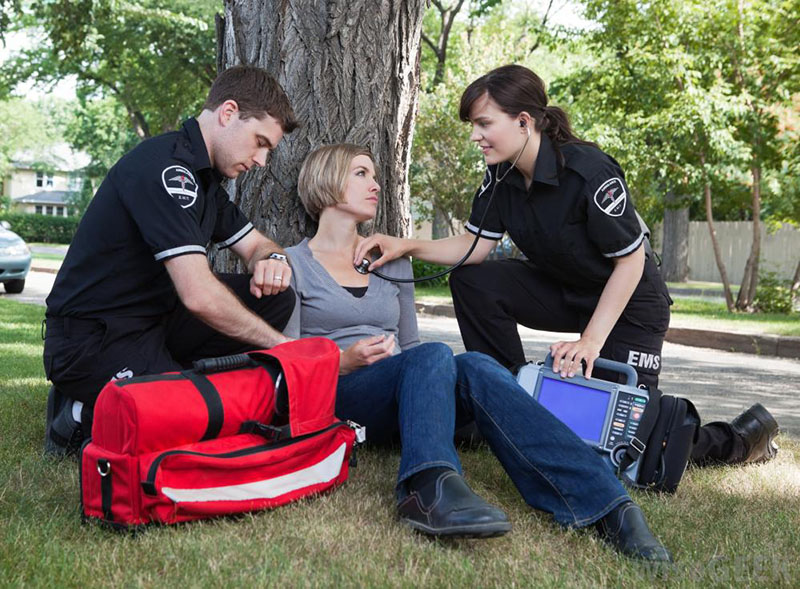Emergency medical services (EMS) is a vital and noble profession, offers an exciting career that is focused on helping people and providing vital health care. If you are considering being an Emergency Medical Technologist (EMT) or getting into the prestigious job of a paramedic then you’ll be stepping into an industry with tremendous growth prospects and a need for highly trained professionals. In this post, we’ll guide you through the steps needed to become an EMT or paramedic, examining the different training options available that include a DSHS approved EMS training courses.

Understanding the Function and Role of EMTs Paramedics, EMTs
Emergency Medical Technicians (EMTs) and paramedics are first responders that provide immediate medical care in the event of an emergency. They are specially trained to assess and take care of patients and transport them to medical facilities to receive additional treatment. Paramedics and EMTs play a important function in stabilizing patients during critical moments, making split-second decisions and providing compassionate care in times of anxiety.
Step 1: Become an EMT
In order to become an EMT you’ll need to be able to complete a variety of education and training programs. These can differ depending on the level of certification you aim to achieve. There are three levels to EMT certification are available:
1. EMT-Basic (EMT-B) EMT-Basic (EMT-B): This is the entry-level certification and is based on 100-150 hours of education. EMTs are educated in basic medical procedures, such as CPR and bleeding control, and the basics of managing airways.
2. EMT-Intermediate: This is a degree that requires additional training. The amount of additional training required is different from state to the next. In certain regions, this level is merged with EMT-B. In others, it involves around 200-400 hours of education, which includes an increase in medical knowledge as well as intravenous therapy.
3. EMT-Paramedic (EMT-P) EMT-P: The top stage of EMT certification, EMT-P is the most advanced level of training and typically lasting around 1,000 to 1,800 hours. Paramedics can carry out advanced medical procedures, including the administration of medication in the form of EKGs, interpreting them and advanced airway management.
Step 2: Obtaining Paramedic Certification
If you aspire to become a paramedic, you have to first complete the EMT-B or EMT-I level, and then get some practical experience. You can then enroll in the paramedic course, which can take between two and one year. The comprehensive course will cover advanced medical topics, and will equip you with the necessary skills and expertise to deal with critical scenarios by yourself.
Step 3: Examining EMT Training Options:
You can choose from a range of options when it comes to EMT certification, based on the level you wish to achieve. EMT training is typically offered by community colleges and medical trades schools for all levels of certification. They combine classes with hands-on training as well as clinical and field situations.
If you’re looking for a thorough and deep EMT program that could be a pathway to a degree from colleges or universities and possibly offer EMT training for the EMT-Paramedic levels. These programs will help you gain an understanding of emergency medicine, which will allow you to make better medical decisions and care for patients.
Step 4: Make sure you have DSHS certified EMS training:
If you’re considering becoming an paramedic or EMT, it’s vital that the program chosen by you be approved by DSHS. The Department of State Health Services accepts EMS courses to ensure that they adhere to the highest standards for competency and training. By enrolling in a DSHS approved EMS training course, you can rest assured that you are receiving top-notch instruction and meeting the necessary requirements for certification.
Paramedics and EMTs are highly sought-after careers. EMTs and Paramedics are first responders who play a vital part in saving lives and providing medical assistance in emergency situations. To begin this lifesaving endeavor, EMTs and Paramedics are required to complete training and education programs. The EMT certification process is available at an institution of higher learning, a medical trade school, or at a university, depending on the level of certification desired.
In addition to considering the alternatives to training, it’s crucial to make sure that the EMS training course is DSHS certified by DSHS. By doing so you will be able to rest assured that you are receiving quality training that is in line with the requirements to obtain EMT as well as paramedic certificates.
As the demand for qualified emergency medical professionals grows, EMS provides a wealth of opportunities for career advancement as well as opportunities to improve the lives of those around you. Whether you start as an EMT-Basic, or you want to become a paramedic your commitment to providing vital medical care will pay off with an exciting and meaningful job in emergency medical care.